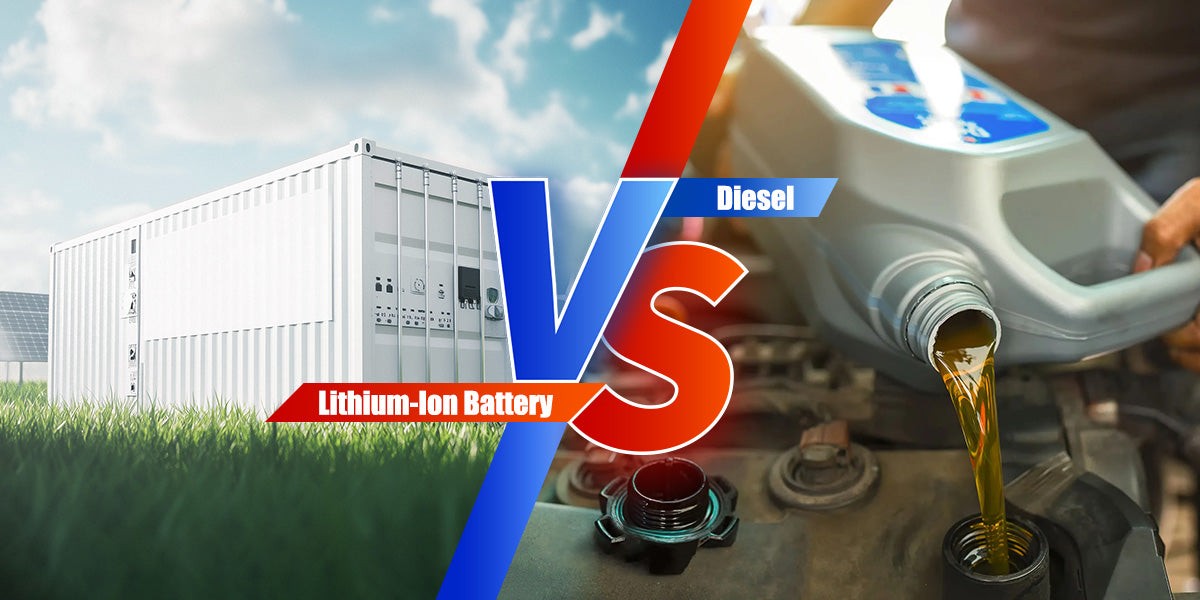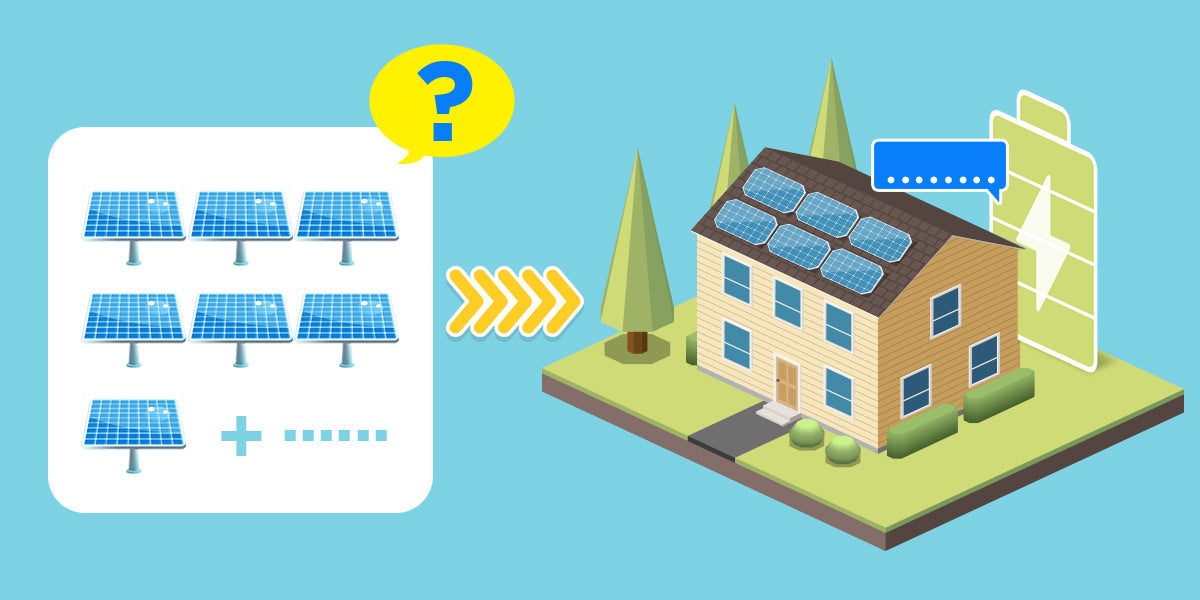Power interruptions drain cash, slow crews, and raise risk. Many sites keep a diesel generator because it feels predictable. A lithium-ion battery now offers quiet operation, instant transfer, and simple upkeep. Costs do not end at purchase, so the numbers below look at installation, fuel or charging, maintenance, testing, and compliance over time. You will also find clear steps for setting the runtime and building a clean TCO model for a U.S. facility.
What Goes Into TCO for Commercial Backup Power
A full view of total cost keeps projects honest. It blends day-one spending with every future bill, plus the items that quotes often miss.
CapEx
- Core hardware. For a generator that includes the unit and ATS. For batteries, that includes racks, PCS, EMS, and fire detection.
- Balance of system. Switchgear, cabling, conduits, enclosures, and site integration.
- Site work and commissioning. Pads, seismic anchoring, crane lifts, permits, and start-up.
OpEx
- Fuel or charging. Diesel deliveries and storage, or grid and solar charging plans.
- Maintenance. Oil, filters, coolant, belts, and load-bank tests for engines. Scheduled inspections and firmware checks for lithium-ion batteries.
- Testing and compliance. Periodic runs, emissions checks, and documentation.
Hidden Costs
- Noise and space. Enclosures, sound walls, and setback rules.
- Air permits and aftertreatment. Planning, urea handling, and fuel quality control.
- Staff time. Vendor coordination, safety access, and paperwork.
A quick matrix helps non-technical leaders compare lines side by side.
| TCO Area | Diesel Generator | Lithium-Ion Battery |
| Upfront Cost | Often lower for the unit | Higher for racks, PCS, EMS |
| Fuel or Charging | Ongoing diesel logistics | Predictable utility or solar charging |
| Maintenance | Regular engine service | Light inspections and monitoring |
| Testing | Mandatory runtime and load tests | Functional tests and EMS checks |
| Compliance | Emissions, noise, spill controls | Fire code and energy code reviews |
Where Do Lithium-Ion Batteries Beat Diesel Generators on Cost and Reliability
Operations decide the real value. A lithium-ion battery delivers instant power with stable frequency and voltage. Sensitive loads stay online without drama. Round-trip efficiency is high, so stored energy reaches the equipment with little loss. Maintenance is light. The BMS and EMS track temperature, state of charge, and cell health. Teams schedule inspections, run software updates, and keep cooling within range. There are no oil changes and no exhaust checks.
Fuel risk also falls. No waiting for trucks during storms. No tank contamination fights. Neighbors and air districts appreciate quiet and clean operation. During normal days, the same system can shave peaks and reduce demand charges. That adds value that a generator cannot capture. In short events, transfer is fast, alarms are fewer, and crews get fewer 2 a.m. callouts.
Runtime Needs and Sizing for Commercial Storage
Pull outage records from your utility and your own logs. Count events, average duration, and the longest event you plan to cover. Then the tier loads in a clear way.
Tier 1 holds life safety and critical production. Tier 2 covers important processes that can pause briefly. Tier 3 can drop during any event. Sum the kilowatts for Tier 1 and the portion of Tier 2 you want to keep. Multiply by target hours to get kilowatt-hours. Add a margin for efficiency and reserve so usable energy at dispatch is guaranteed and lifespan stays healthy.
A simple example clarifies the math. A site needs 100 kW for 4 hours on critical circuits. That is 400 kWh before margins. Add a reasonable buffer, then select a PCS that can supply the full 100 kW. If your region sees rare multi-day events, consider a hybrid. A modest diesel runs at a steady set point for a long duration. The battery handles instant transitions, peak trimming, and short events. Fuel use falls, noise falls, and routine engine test hours fall.
TCO Modeling for Commercial Energy Storage
A clear model creates trust across engineering, finance, and operations. Keep inputs visible and easy to revise. Build one sheet for the generator path and one for the battery path, then compare on a summary page. A 10 to 15-year horizon fits most facilities.
Key Inputs
Set critical load in kW and target runtime in hours. Record annual outage hours and test hours. Enter your tariff, including time-of-use and demand charges. List maintenance items and service intervals. Add compliance lines such as permits, inspections, aftertreatment, and reporting. For lithium-ion batteries, plan for round-trip efficiency, usable energy, and cycle policy.
Core Formulas
Calculate energy delivered during outages as kW multiplied by hours and event count. Estimate the annual diesel cost or the annual charging cost. Sum maintenance by interval and parts list. Discount all cash flows to present value at your chosen rate.
Sensitivity Checks
Test higher and lower diesel prices. Test tariff shifts. Test outage counts that differ from your three-year average. Test deeper or shallower discharge policies for the pack.
Interpreting the Result
State the outcome in plain language. If events are short and frequent, lithium-ion batteries often show lower total cost and better uptime because the same asset helps on normal days. If events are rare but last a long time, a pure engine can still look attractive on first cost and simple runtime. Many sites land in the middle, where a hybrid reduces risk and lifetime cost. Include one clear line that calls out the cost of a commercial battery backup system so decision makers can compare scenarios without hunting through formulas.
Worked Example: Cost of a Commercial Battery Backup System (100 kW × 4 h) vs Diesel Generator
Use a template your controller can follow. Inputs come from quotes and your tariff. The battery path sizes to about 400 kWh before margins and selects a PCS that can deliver 100 kW. The generator path confirms rating, ATS size, and tank plan. Request two competitive quotes for each path, including the balance of system and commissioning.
Annual charging cost depends on off-peak rates or on a solar plan if your site has one. Annual diesel cost depends on test hours and outage hours, plus delivery fees. Maintenance for the engine includes recurring parts and fluids. Maintenance for the battery focuses on inspections, cleaning, firmware, and monitoring. Compliance lines attach to each path. Engines require periodic runtime and emissions documentation. Battery systems require fire code compliance and inspections.
Discount each cash flow to present value. Compare totals at year 10 and year 15. In sites with short and frequent events, the lithium-ion battery often leads in TCO and uptime because it also trims peaks during normal operation. In regions with long and rare events, a generator can still make sense. A hybrid can lower fuel use and noise while protecting extended runtime.
ROI of Commercial Solar Battery Storage and the Lowest TCO Choice
Reliable power, clean operations, and a steady balance sheet can align. A lithium-ion battery supports sensitive loads, responds fast, and reduces fuel risk while adding value through peak shaving and off-peak charging. A pure diesel path still serves long, rare events, and a hybrid can lower lifetime cost where extended runtime is critical. The best choice comes from local tariffs, outage history, and a full view of total cost. With a grounded model and a sizing plan tied to real loads, your commercial backup power strategy will meet risk targets and deliver low TCO over time.
FAQs
Q1. Can my project claim U.S. tax incentives for storage-only backup?
Yes. Standalone storage is eligible for a 30% federal Investment Tax Credit. Meet prevailing wage and apprenticeship rules to keep the full rate. Some projects qualify for energy-community or domestic-content adders. Engage a tax advisor and align contracts for compliance.
Q2. How can I speed up permitting and AHJ approval?
Book a pre-application meeting with your AHJ. Bring the one-line, site plan, UL 9540 listing, 9540A summary, NFPA 855 layout, ventilation and detection details, and ATS/microgrid sequence. For diesel, include noise and spill plans. Clear submittals often cut review cycles.
Q3. Will my insurer require anything specific?
Carriers often ask for UL 9540 listing, 9540A summary, fire-alarm integration, and an emergency response plan. For diesel, provide SPCC documentation and secondary containment. Notify your insurer before procurement so underwriting reviews hazards early and avoids coverage delays.
Q4. Can batteries start large motors or compressors?
Yes, with proper PCS sizing. Specify required kVA surge and duration. Use soft starters or VFDs to tame inrush. If occasional very high peaks remain, pair a modest generator with lithium-ion batteries to let storage absorb transients during starts.
Q5. What financing shifts cost from CapEx to OpEx?
Consider storage-as-a-service, an energy-service agreement, or a tax lease. Payments shift to OpEx and can bundle maintenance, monitoring, and performance guarantees and warranties. Compare the net present cost to the cash purchase. Preserve outage rights and priority dispatch for critical loads in contracts.





Leave a comment
All comments are moderated before being published.
This site is protected by hCaptcha and the hCaptcha Privacy Policy and Terms of Service apply.